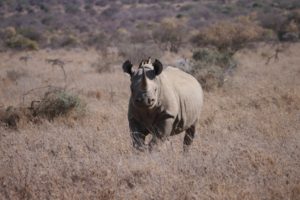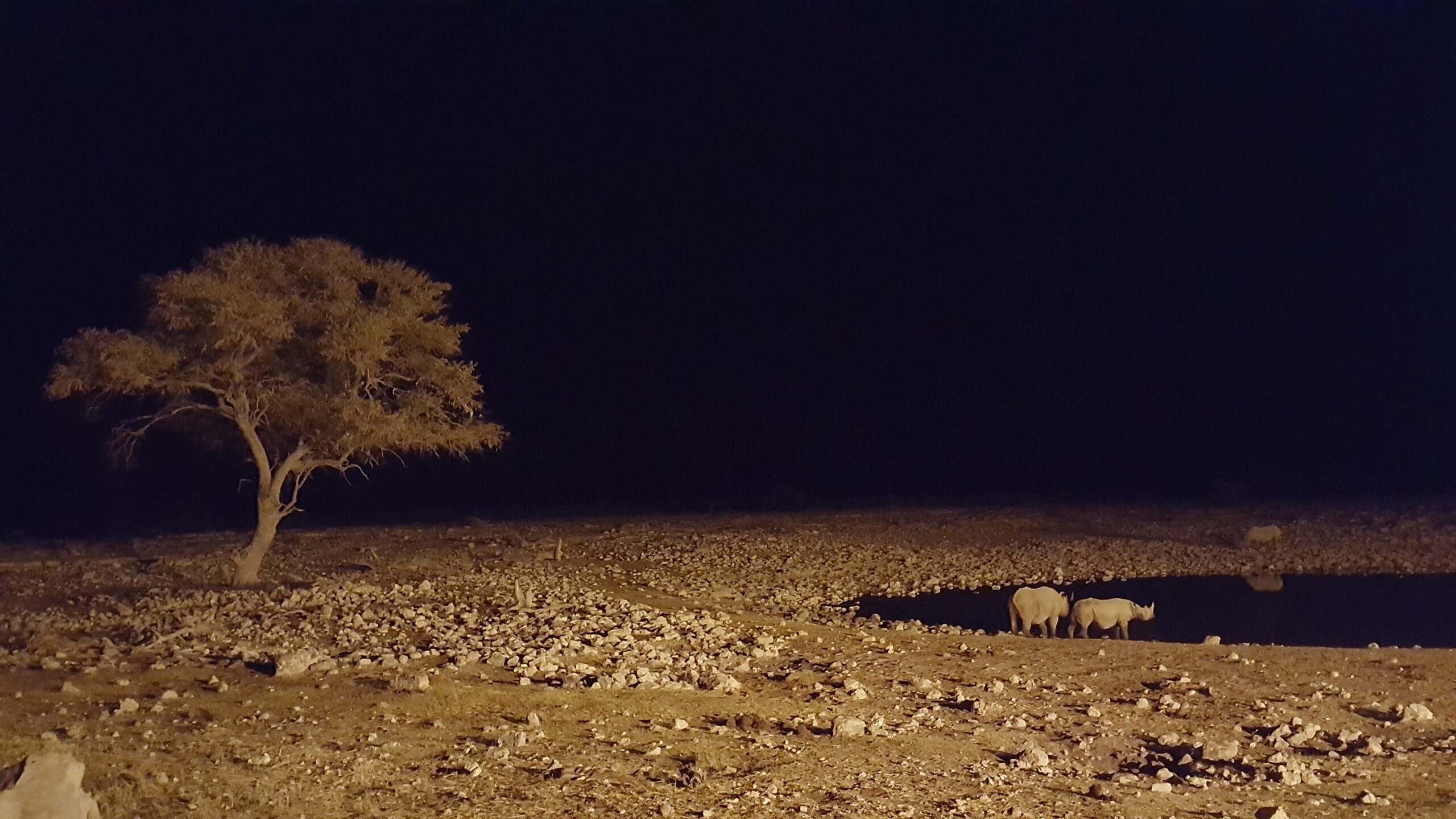On 22nd September 2025, when we celebrate World Rhino Day, a wildfire tore its way through Etosha National Park, the world-famous protected area in the north of Namibia. Within days it had raced across grasslands and mopane woodlands, spilled over Park fences, and turned familiar landscapes into a maze of blackened stems and ash. Etosha is a mosaic of barren salt pans, waterholes, and wildlife-rich savannahs that support an array of animals including African bush elephant (Loxodonta africana), gemsbok (Oryx gazella), lion (Panthera leo), honey badger (Mellivora capensis) and the world’s largest population of highly threatened south-western black rhino (Diceros bicornis bicornis).
Savannahs are adapted to fire and, prior to human interventions, Etosha was subject to intense fires roughly once per decade following a rainy season. Lightning would ignite a fire, the grass would burn, and the system would reset itself. In the 20th Century, the Park’s early policies favoured suppressing such fires, inadvertently letting dry grass build up and creating high fuel loads. The strategy shifted in the 1970s, as Park managers learnt to utilise controlled burns in the landscape, embracing it as a conservation tool. However, small, controlled burns are vastly different to the fire that happened during September.
According to the country’s Minister of Environment, Forestry and Tourism, Indileni Daniel, it is suspected that the most likely ignition source for this fire was unregulated charcoal production outside the Park. Charcoal provides a source of livelihood for many people living adjacent to Etosha’s boundaries, but when practised close to a large, protected area during a lengthy dry spell, the odds of a catastrophic accident increase.
By the time the dry season started in September, Etosha had contiguous swathes of tinder-dry grasses, shrubs, and mopane, enabling the fire to spread far and fast. Furthermore, strong winds carried flaming embers ahead of the main front of the blaze, creating smaller spot fires that started new fronts kilometres away from the main blaze. These spot fires multiply the challenges for crews on the ground, transforming the problem from one advancing line into dozens of small, rapidly-forming blazes scattered across a vast landscape. Put all these factors together and the result is a catastrophic wildfire that has affected more than 38% (853,946 hectares) of Etosha’s land. And that was in just one week.
In response, the Government of Namibia held an emergency meeting at which it was decided to send in troops to help firefighters, police, and volunteers on the ground. Two aerial assessments of the Park were undertaken the week after the fire’s outbreak and no active fires were found. The Namibian Defence Force has deployed 364 personnel in and around the Park following the fires, with another 40 troops and nine Drone Support Unit members remaining inside to assist monitoring and the clean-up. Thirty Air Force staff have been continuing aerial operations, to assess the scale of the damage. The Ministry has sent three veterinarians to tend to injured animals, while teams monitor waterpoints and wildlife corridors, and urge visitors in the Park to report any distressed, wounded or dead animals.
An assessment is currently underway to determine the full extent of the damage, including wildlife losses. The emphasis now is on coordinated recovery: strengthening partnerships between Park staff, regional councils, community groups and private-sector partners to prioritise waterpoint repairs, targeted veterinary follow-ups, landscape stabilisation work, and support for affected households. Meanwhile independent teams complete ecological and socio-economic assessments to inform immediate relief efforts and a revised fire-management plan.








